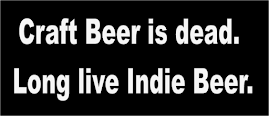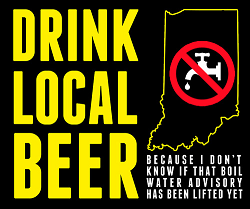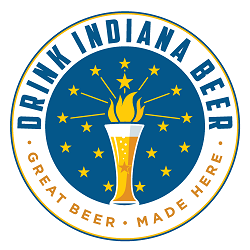The PC: Euro ’85, Part 19 … Sligo, Knocknarea, Guinness and Freddie.
A weekly column by Roger A. Baylor.
(Nineteenth in a series chronicling my travel year 1985)
It has been firmly established that in July of 1985, I arrived in Ireland for a week off the continental grid, with a song in my heart as well as a heartfelt desire to consume draft Guinness with a vengeance.
This alone would have sufficed for a good time, as pursued in a pub format I was experiencing for the first time, and now recall with fondness: Fiddles and tin whistles, guitars and banjos, jigs and reels, and pints of stout all around, with everyone in the room seemingly capable of singing better than the actual performers.
Guinness-powered conversation was even better. In the barrooms, there was a deep reverence for the collective Irish historical experience, desperate and impoverished as it often had been. The former British colonial overlord seemed to inspire amusement, annoyance and even periodic affection; while those olden times were a significant portion of the national narrative, they were gone, come what may.
Nor would Ireland be returning to its Gaelic-speaking past, even when the often ham-fisted theocratic government insisted it try. There was a misty Euro-future somewhere beyond the foggy dew, though honestly, it couldn’t yet be seen with clarity. The Celtic Tiger had not roared, and property neither boomed nor burst.
There was plenty of gallows humor, mordant and defeatist, yet playful and vibrantly patriotic, looking always to a different and better life ahead in spite of the horrendous pratfalls of the past. There was much good-humored bawdiness about drinking and whoring and the nobility of true love, as in this anecdote.
In the Irish love triangle there are three parties involved: A man, and a woman – and drink.
And so the girl gives an ultimatum to her boyfriend: It's either the drink, or me.
And he chooses the drink.
But afterwards, he relents. They get married and live happily ever after … the three of them.
This valuable cultural education really began only after I departed Dublin. No offense to the capital city, which probably ranks second only to London in terms of literary prowess in the English language – Ireland’s second tongue, mind you.
Rather, it was a manifestation of intent … and a bit of exhaustion.
---
Pecetto had been my last port of call situated anywhere near the countryside, and this northern Italian interlude had come more than a month previous to landfall in Eire. I may have been developing into an urbanite, but the metamorphosis wouldn’t come without growing pains.
Consequently, what I most wanted to do in Ireland in the summer of 1985 was find somewhere pleasingly rural, although not so isolated that more than five or six days would be required to find my way back to Rosslare and the ferry to France.
An Irish stereotype was urgently needed, perhaps a regular provincial town, one with open spaces for rambling and scenery for reflection. Pubs were a requirement (as though one could locate a square inch of Ireland without three or more of them in stumbling distance), and cheap eats.
The town needed to be accessible by train, because that way, tickets back and forth already were paid via the Eurailpass. Looking at a map, there were obvious candidates. The Irish national railways could be seen radiating from Dublin like spokes from a wheel’s center.
One might easily travel by rail south to Cork or west to Galway, but not to both on the same trip without first returning to Dublin. Buses, not passenger railroads, connected the spokes to each other.
The town of Sligo seemed the ideal destination. It is a natural harbor dating to ancient times, situated to the northwest of Dublin on Ireland’s western side, with the Atlantic Ocean stretching over the horizon to infinity. The word “Sligo” itself was utterly alien to me, but sounded estimably Irish, and while there wouldn’t be time enough to explore rugged Donegal, where the original Gaelic still could be heard, there was at least an element of bucolic isolation.
I chose Sligo, and never regretted it.
Exiting the small, silent train station on a sunny day, I strolled into a settlement of perhaps 10,000 inhabitants. It has since doubled in population, and looking at the ever handy satellite view on Google Map, I see almost nothing familiar about the town, with sleek malls and department stores stacked near the station. Three decades is a long time, after all.
What I remember about Sligo at this late date is an impression of orderly and clean but languid, and a bit “down at the heels.” As always, job one was locating a place to sleep, which presumably meant the youth hostel someone had recommended back in Dublin. I found it, though not before my attention was caught by a hand-lettered sign on jagged cardboard, posted in the window of a typical row house:
“Bed and Breakfast.”
Well, informality had worked out fine in Dublin, hadn’t it?
Just because the tourist bureau didn’t endorse a room wasn’t any reason not to try it. Retracing my steps, I knocked and was introduced to the delightful O’Donnells, Mary and Gerry, school teachers in their fifties on summer break, trying to earn a few punts by renting their spare bed to a bedraggled wanderer just like me.
Perfect. The price was right, and before I ran back out to find a bank and grocery store, Mary reminded me that afternoon tea was included as an option. This being Ireland, perhaps it should come as no surprise that my hosts weren’t standoffish about my presence. They had grown children my age, and I felt like a house guest, not a paying customer. For the next five days, we got along famously.
It was time enough to develop a routine. Evenings in Sligo were for pub visits, listening to music and nursing pints. The regular Irish summer rain held off, and so days were for walking.
One afternoon was spent roaming the streets and taking pictures with a roll of black and white film I’d stashed in the lead-lined pouch for the purpose of exercising photographic artistry, assuming I possessed any.
Another entire day involved a long walk to the east, following the Garavogue River inland past rows of old mill buildings to Lough Gill, with Benbulbin, a plateau-like rock formation, hovering over the skyline to the north. It occurred to me to hike to the top, but a different plan, at a different hill, already was taking shape for Saturday.
---
At one of the pubs, I’d overheard a conversation about a big concert on Saturday, July 13. At first I thought they meant a show in Sligo itself, but then it became clear it was to be televised from Wembley Stadium in London – and finally I made the connection with the magazine spotted at the hostel in Paris.
It was Live Aid, Bob Geldof’s epochal day-long, worldwide gig to raise funds for Ethiopian famine relief. I was about to learn the importance of being Irish; Geldof was born and raised near Dublin, and as the guiding force behind the punk-era Boomtown Rats, he doubled as curmudgeonly social critic, a quality Irish conservatives found disconcerting – until the hometown boy made good on a larger stage.
Never discount the power of national pride. Live Aid was the project of an Irishman, and Ireland was preparing to be quite enamored of this fact, whether or not any of them liked the Boomtown Rats.
On Saturday morning, I asked Gerry which bus went to Strandhill, a settlement by ocean at the foot of Knocknarea (nock-na-ray), a 1,000-foot tall limestone hill overlooking the Bay of Sligo. My plan was a morning hike to the top, where a Neolithic burial cairn is located, and then a return to Sligo to watch Live Aid.
As it turned out, Gerry was preparing to drive to the golf course, and so he deposited me at the trail head near Strandhill. It was hazy, muggy and fly-infested, and the path well-traveled. The view from Knocknarea was worth the effort, with majestic vistas of green fields, rocky hedgerows, shimmering sea and the ever-present Benbulbin.
I caught a bus back to Sligo before lunch, showered, and found a seat at a nearby pub. Live Aid was showing on a projection TV. The Irish national television channel had preempted all other programming, and between acts, there were cuts from the live feed to the studio, where an older presenter and Phil Lynott, Thin Lizzy’s singer and bassist, provided what amounted to color commentary.
It struck me that when a set ended, and the two began talking, voices in the pub would be lowered, and the drinkers would pause to listen. Then again, it was still relatively early in the day.
Live Aid was the most ambitious international satellite television production of its time, and Geldof’s creation was subject to rightful criticism: Wasn’t it the very same group of pious pop stars, pumping up their own album sales by means of a charitable “cover,” with little of the money raised ever actually making it to the intended beneficiaries in Ethiopia?
More pointedly for Live Aid’s connection with Africa, why were the acts almost entirely white? Stevie Wonder is said to have refused a slot at the American venue because he had no intention of being the token black.
Ironically, Lynott was a black Irishman, born in London, and he was in the television studio precisely because his band hadn’t been invited to play. How could Bob do that to Phil? They were mates. Still, as Live Aid unfolded, my fellow pub goers were united in praise for the idea – after all, it was Geldof, an Irishman, who’d organized it. Unfortunately, illness and heroin addiction killed Lynott barely six months later.
Did he and Sir Bob ever make up?
At some point later in the afternoon, I walked back to my room to get more money. I heard familiar sounds coming from the kitchen, where Mary sat watching U2 begin its star-making Live Aid set.
“It’s U2,” I said. “I love this band. Are you a U2 fan, too?”
“I’ve no idea,” she replied. “But they’re
our lads, aren’t they?”
We watched together.
Just as I re-entered the pub, Queen started playing. Like much of the rest of the planet, I was spellbound as Freddie Mercury worked the crowd of 75,000. I’d been only a casual follower of the group, and had not witnessed it on stage. Queen’s 20-minute set at Live Aid is routinely rated among the most memorable live performances in rock history, and while it may have not been the music I came to Ireland to hear, it’s a personal memory I’ll always cherish.
It gets hazy after that. Back in my room, I listened to the some of the Philadelphia portion of Live Aid on a small radio I’d brought along. I fell asleep, and it would be many years, well into the Internet era, before I ever saw video of what I'd missed.
European time was running out. Three weeks remained. It was time to head back to France, and north to Scandinavia, because I had a big date in Helsinki at the beginning of August.
---
Previously:
The PC: Euro ’85, Part 18 … Irish history with a musical chaser.
The PC: Euro '85, Part 17 ... A first glimpse of Ireland.
The PC: Euro ’85, Part 16 … Lizard King in the City of Light.
The PC: Euro ’85, Part 15 … The traveler at 55, and a strange interlude.
The PC: We pause Euro '85 to remember the Mathäser Bierstadt in Munich.
The PC: Euro ’85, Part 14 … Beers and breakfast in Munich.
The PC: Euro ’85, Part 13 … Tears of overdue joy at Salzburg's Augustiner.
The PC: Euro ’85, Part 12 … Stefan Zweig and his world of yesterday.
The PC: Euro ’85, Part 11: My Franz Ferdinand obsession takes root.
The PC: Euro ’85, Part 10: Habsburgs, history and sausages in Vienna.
The PC: Euro ’85, Part 9 … Milan, Venice and a farewell to Northern Italy.
The PC: Euro ’85, Part 8 … Pecetto idyll, with a Parisian chaser.
The PC: Euro ’85, Part 7 … An eventful detour to Pecetto.
The PC: Euro ’85, Part 6 … When in Rome, critical mass.
The PC: Euro ’85, Part 5 … From Istanbul to Rome, with Greece in between.
The PC: Euro ’85, Part 4 … With Hassan in Pithion.
The PC: Euro ’85, Part 3 … Growing up in Greece.
The PC: Euro '85, Part 2 ... Hitting the ground crawling in Luxembourg.
The PC: Euro ’85, Part 1 … Where it all began.











